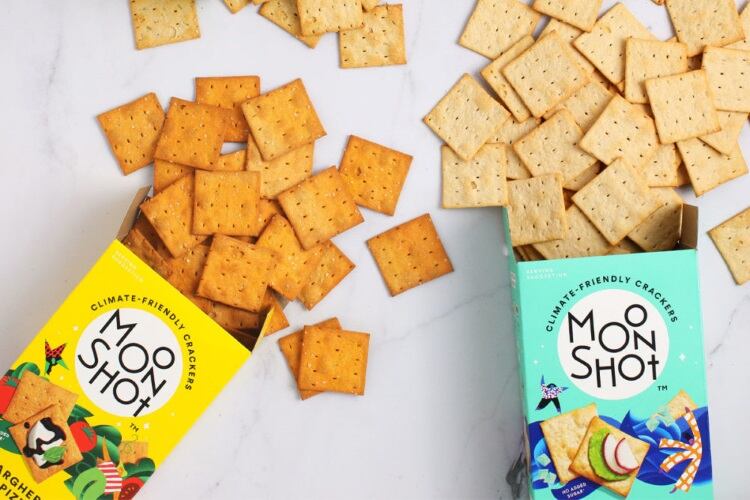Colorado-based Quinn recently announced its participation in a new Go-To-Market Pilot Programme, designed to incentivise more US farmers to improve soil health, which will increase biodiversity and climate resiliency while bumping up their profits.
UK miller Wildfarmed has embarked on a month-long tour throughout March to introduce customers to its nutrient-rich flour produced through practices that help to increase biodiversity in soil, promote food education and reduce carbon emissions.
Oreo giant Mondelez has triggered Harmony Ambition 2030, the next chapter of its European sustainable wheat sourcing programme and PepsiCo Frito-Lay is collaborating with Archer Daniels Midland (ADM) to expand regenerative agriculture practices across their shared North American supply chains.
In 2019, General Mills committed to advancing regenerative agriculture practices across one million acres of land by 2030.
The Quaker Oats, Frito-Lay and Pringles maker launched a series of videos showcasing how it is working with farmers in Thailand, Greece, India and Brazil to help them adopt regenerative agriculture practices in order to reach the world's 1.5° target.
This is just a handful of stories published by Bakery&Snacks of the brands looking beyond mere marketing ploys to entice the increasing pool of environmentally-aware consumers, but actively helping their supply chains to transition to regenerative agriculture practices across the globe.
What’s all the fuss?

In a nutshell, regenerative ag is a more nature-friendly way of farming.
Broad strokes: it employs farming and grazing practices that restore degraded soil; improve biodiversity among pollinators (especially bees and butterflies); increase carbon capture in the soil; and improve water and air quality.
More specifically: it seeks to move away from synthetic fertilizers, monoculture crops and chemically dependent production methods.
The end result: a healthier planet and more nutritious food, while also serving to increase yields and profits for the farmer.
According to Nielsen, 75% of millennials are altering their buying habits and shifting towards products produced under regenerative practices before of the many benefits they offer. So its something that brands can no longer afford to ignore.
Pushing for greater uptake

It all starts, though, at farm level and making it easier is a new collaboration between NASA Harvest and Israeli AgTech start-up Agmatix.
NASA Harvest is a consortium of multidisciplinary experts working on the environmental, economic and social aspects of agriculture, brought under the auspices of the US federal government’s National Aeronautics and Space Administration and led by the Harvest Hub at the University of Maryland.
It works to enable and advance adoption of satellite Earth observations by public and private organisations to benefit food security, agriculture and human and environmental resiliency across the globe.
The platform has now forged a partnership with Agmatix to advance the use of satellite-based information to help inform on-farm decisions, making it easier for farmers to transition to sustainable ag practices.
The Tel Aviv-based business specialises in turning agronomic big data into powerful models and insights to support crop production and mitigate the impact of climate change.
A combination of ground sampling and remote sensing data will be used to support farmers in their transition toward sustainable agriculture. The methodology developed within this partnership will track farmer efforts to improve conservation management and guide them to improve their sustainability levels.
Climate change, food waste, consumer expectations

“According to the World Economic Forum, sustainable agriculture practices must triple in order to prevent climate change,” said Ron Baruchi, CEO of Agmatix.
“Currently, adoption is hindered by a lack of consistent and acceptable measurements at scale.
“Our collaboration will promote resilient agriculture beginning with smallholder farms in India and commercial farms in Brazil, and lead to further expansion worldwide.”
NASA Harvest will provide its expertise on agricultural remote sensing and leverage tools developed by the consortium, which will then be combined with field data from Agmatix and processed using a proprietary artificial intelligence (AI) algorithm.
Satellite imagery alongside ground measurements will be analysed using the Agmatix platform. These data-driven insights will then help farmers make field-level decisions that impact sustainability most effectively, such as cover crop selection and fertilizer application.
“NASA Harvest is excited to partner with Agmatix to advance the use of satellite-based information to help inform on-farm decisions which can ultimately result in increased resilience while reducing waste,” said Inbal Becker-Reshef, NASA Harvest director.
Added Barushi, “Our collaboration will help food manufacturers meet consumer expectations for more sustainably sourced products.”



